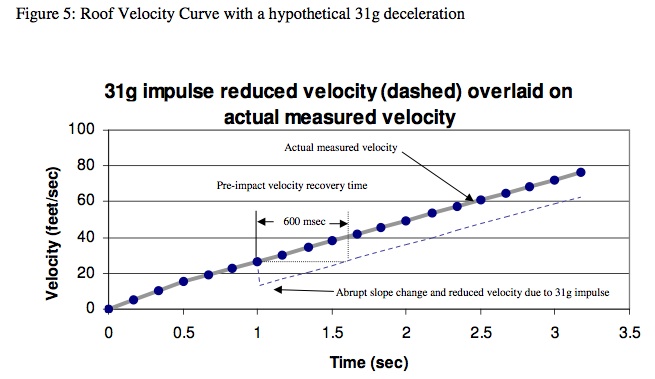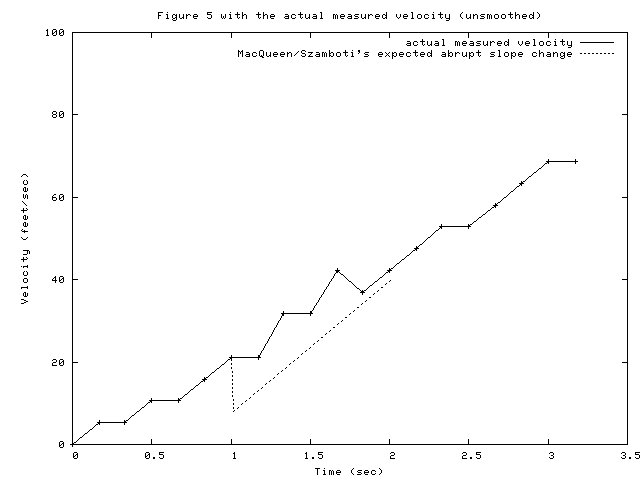Regarding my reference to
one of his posts on the first page of this thread, Dave Rogers wrote:
They may have removed the smoothing function from the prose, but they left the misleadingly smoothed data in Figures 2, 3, 4, 5, and 6. Until you posted the above, I had assumed your
earlier post was referring to the smoothing evident in those figures. I guess the early draft you saw had discussed the smoothing in the text of the paper as well, which would have been less misleading than what they actually published.
Here is Figure 5 from their paper:
[qimg]http://www.ccs.neu.edu/home/will/Music/Jokes/Szamboti/figure5original.jpg[/qimg]
Although Figure 5 above claims to present "actual measured velocity", that is a lie. Here are the actual measured velocities, as computed directly from their unsmoothed data in the table on pages 6-7:
[qimg]http://www.ccs.neu.edu/home/will/Music/Jokes/Szamboti/figure5honest.jpg[/qimg]
Their sampling rate was only 6 Hz, and their sampling error for distances was at least the 0.88 foot distance corresponding to a single pixel, so their sampling error for velocities is at least 5.28 ft/sec. That is also the quantum for their velocity measurements. A horizontal interval of 1/6 second doesn't mean anything unless the velocity measured for the following 1/6 second increases by two quanta or more (10.56 ft/sec).
As can be seen from the unsmoothed data in my graph, there appear to have been three mild jolts around 1.00, 1.33, and 1.67 seconds. Tony's expected delta-V of 13.13 ft/sec is shown in the dashed line, followed by the subsequent 1g acceleration implied by their model (instead of the incorrect reduced acceleration shown in their Figures 5 and 6, which was also incorrectly labelled as "reduced velocity"). If you compare the solid and dashed lines at 2 seconds, you will see that the sum of the three (or more) mild jolts was equal to Tony's expected jolt to within quantization error.
Hence jolts summing to the magnitude Tony expected have been there in his data all along, but Tony's expected big jolt was divided into at least three smaller jolts. That confirms the consensus hypothesis that the jolts were smeared out over time, and disproves Tony's hypothesis that the upper section collided so solidly with the lower section that there was only one big jolt.
Had MacQueen and Szamboti graphed their data properly, that would have been obvious.





